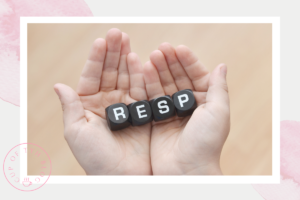Most benefits that Canadians enjoy are because of the taxes that they paid. The taxes collected by the federal, provincial and municipal governments of Canada pay for the road construction and maintenance, health care, social security, economic development, educational programs, public utilities, cultural activities and public safety among other things. These taxes come in different types – income taxes, sales taxes, property taxes, and for business owners, the business taxes.
This post intends to provide basic information that you can use in filing your income tax return. Canadian residents are required to file their income taxes each year, through the income tax return, the taxpayers lists their taxable income, deductions and tax credits to calculate how much tax they owe to the government.
Canadian taxpayer is responsible for making sure that they comply with the tax rules of each level of government, taxpayer must ensure that they paid the correct amount of taxes every year according to the law. A person who is a resident of Canada must file a tax return for the previous year. A tax return is basically your report to the government of all of your income and some other financial details for a given year. A newcomer to Canada is also required to report his world income for the part of the year that he is a resident of Canada. Social Insurance Number (SIN) is an identification that a permanent resident (or someone working in Canada) must have, this unique and personal nine-digit number is required from an individual for him to work in Canada or to have access to government programs and benefits.
A taxpayer must pay the corresponding tax based on a number of factors such as:
- the province where the person lives;
- the amount of taxable income earned during the previous calendar year; and
- the available tax deductions that the person is eligible to declare.
Common types of taxable income are employment income, self-employment income, tips and gratuities, occasional earnings, and investment income, while, tax deductions can include arts amounts for children, medical expenses, child care expenses, charitable donations, moving expenses etc.
CRA collects the tax on behalf of the federal government, provinces and territories, CRA has the authority to examine tax records to ensure that an individual (or business) has complied with the tax law, they use various review programs to make sure that people are following rules. A tax year ends on December 31st and tax return and any amount that you owe must be received by the CRA on or before April 30th of the following year while self-employed individuals can file their return o or before June 15th (but still need to pay their balance due on or before April 30th).
Why and how you file your tax returns?
A Canadian resident have to file his income tax return to pay the accurate amount of income tax owned, in return, he benefits from the programs and services provided by the government. Tax revenue is used to deliver benefits to lower income families, charities, students, retirees, and people with disabilities, it provides social benefits such as old age security, the Canada child tax benefit, employment insurance benefits, the working income tax benefit and the goods and services tax/harmonized sales tax credit.
There are a lot of situations in which people have to file a return, generally, an individual must file a return if he has an income and needs to pay tax for a particular calendar year. A person must file if the CRA sent him a request to do so. Individuals in all provinces and territories file a federal general income tax and benefit return, also called as T1 return. They also fill out the applicable provincial or territorial schedules for their province or territory of residence, with the exception of Quebec. T1 return is used to report income, claim deductions and credits and calculate tax obligations for the year. Quebec residents file a federal T1 return for the CRA and a separate provincial return for Revenu Québec.
A taxpayer must gather supporting information to fill out his return, including slips or receipts provided by an employer, payer or prepared by an administrator and various institutions such as:
- T4, Statement of Remuneration Paid;
- T4A, Statement of Pension, Retirement, Annuity, and Other Income;
- T4E, Statement of Employment Insurance and Other Benefits; and
- T5007, Statement of Benefits.
Because CRA calculates benefits and tax credits based on the taxpayer’s family situation, a taxpayer must declare his marital status and the name of his spouse or common law partner and his partner’s SIN and income. In order for CRA to calculate benefits, both the individual and his spouse or common-law partner must generally file an income tax and benefit return every year, even if neither of them have no income to report.
After gathering all the information slips from employers or payers, the taxpayer, must report all the amounts shown in box 14 of all his T4 slips to calculate his total income. Lottery winnings, GST/HST credit payments, Canada child tax benefit payments, and payments from related provincial and territorial programs should not be included as income. You also need to identify and claim your deductions in your T1 return, deductions are divided into two groups on your return: those that are deducted from your total income and those that are deducted from your net income. Some types of deductions from your total income include RRSP deductions, child care expenses, support payments you made, and union dues while the amounts that can be deducted from your net income include the Northern residents’ deductions and the capital gains deduction. More information regarding this information can be found in www.cra.gc.ca
Once a taxpayer is ready to file his return, he has several ways to file it. CRA allows electronic filing options, such as EFILE and NETFILE and of course, there is always the paper filing method. EFILE allows filing service providers send individual T1 return information to the CRA over the Internet. Authorized service providers are primarily those who operate a tax preparation business. On the other hand, NETFILE allows most Canadians to file their personal income tax and benefit return using the Internet.
If a taxpayer wishes to use paper-filing method, he can use the General Income Tax and Benefit Guide to help him to follow steps in preparing his return. The taxpayer will need to transfer all data from his information slips to the schedules and return and calculate both federal and provincial taxes and how much he owes or expects to receive as a refund. The paper return can be mailed to the tax centre is noted on the back cover of the forms package (or you can visit CRA’s website to find where to send your T1 return).
If a taxpayer calculated that he has a balance owing, he must pay this owing so that you don’t get charged late-filing penalties and interest. However, if the taxpayer can’t pay his full balance owing, he can set up an arrangement by calling the TeleArrangment service at 1-866-256-1147 or the CRA at 1-888-863-8657.
Note that it is very important to keep and organized your tax documents, in general, it is advisable that a taxpayer must keep all his records and supporting documents. If this necessary information are not kept and a taxpayer is unable to provide proof to CRA in case CRA reviews the taxpayer’s return, the CRA may have to determine his income using other methods. The CRA may also disallow expenses that were deducted and credit the claimed, should these deductions were not supported.
What are the deductions/credits that can be used to pay less tax for the 2016 tax year?
While a taxpayer’s return may show that he needs to pay more tax, there are deductions that may be available for him or he may be able to claim some non-refundable tax credits, and reduce his federal tax. Tax deductions and tax credits, though they both serve the same purpose (reduce tax burden) they work in different ways. Tax deductions work by lowering taxable income while tax credits are direct reduction on the tax due.
You may refer to CRA’s webpage for list and full details of various tax deductions and credits that is available in your province which may be applicable for you and your family but here are some of the here are the allowed deductions and tax credits for Canadian taxpayers for the 2016 tax year:
Childcare expenses deduction (Line 214): Taxpayers can claim child care costs paid to daycare centres, day nursery schools, caregivers such as nannies, day camps, and overnight boarding schools to have someone to look after his or his spouse’s or common-law partner’s child or a child under 16 years so that the person could earn income from employment; carry on a business either alone or as an active partner; attend school under the conditions identified under Educational program; or carry on research or similar work, for which you or the other person received a grant. The age limit does not apply if the dependent child is mentally or physically infirm.
Support payments made (Line 230 & 220): This includes non-deductible child support payments you made under a court order or written agreement. This do not include amounts you paid that are more than the amounts specified in the order or agreement, such as pocket money or gifts that you sent directly to your children. To be eligible to claim this deductible, you must register your court order or written agreement with CRA. For more information regarding this, see Registering your court order or written agreement.
Spouse or common-law partner amount (Line 303). You are eligible to claim this amount if at any time in the year you supported your spouse or common-law partner and his or her net income was less than $11,474. However, if you claimed the family caregiver amount for your spouse or common-law partner, his or her net income must be less than $13,595.
Amount for an eligible dependent (Line 305): You may be able to claim this amount for one other person if at any time in the year (1) you did not have a spouse or common-law partner or, if you did, you were not living with, supporting, or being supported by that person; (2) you supported a dependent in 2016; (3) you lived with the dependent (in most cases in Canada) in a home you maintained, however, you cannot claim this amount for a person who was only visiting you. In addition, at the time you met the above conditions, the dependent must also have been either your parent or grandparent by blood, marriage, common-law partnership, or adoption; or your child, grandchild, brother, or sister, by blood, marriage, common-law partnership, or adoption and under 18 years of age or had an impairment in physical or mental functions.
Adoption expenses (Line 313): As a parent, you can claim an amount for eligible adoption expenses related to the adoption of a child who is under 18 years of age. The maximum claim for each child is $15,453. You can only claim these incurred expenses in the tax year including the end of the adoption period for the child.
Caregiver amount (Line 315): If, at any time in 2016, you (either alone or with another person) maintained a dwelling where you and one or more of your dependents lived, you may be able to claim a maximum amount of $4,667 for each dependent. Each dependent be 18 years of age or older, must had a net income in 2016 of less than $20,607 ($22,728 if he or she was eligible for the family caregiver amount), he or she was dependent on you due to an impairment in physical or mental functions or, if he or she is your or your spouse’s or common-law partner’s parent or grandparent, was born in 1951 or earlier.
Amounts transferred from your spouse or common-law partner (Line 326): You may be eligible to claim all or some unused amounts of your spouse or common-law partner non-refundable tax credits to reduce his or her federal tax to zero, if he or she does not need to claim some or all of certain amounts.
Medical expenses tax credit (Lines 330 and 331): This credit applies to individuals who have significant medical expenses for themselves or their dependents. You can claim only eligible medical expenses on your tax return if you, or your spouse or common-law partner paid for the medical expenses in any within any 12-month period ending in the calendar year (2016) and did not claim them in the previous year (2015). If the individual died in the year, the medical expenses must have been paid within any 24-month period that includes the date of death. Generally, the amount being claimed must be supported by receipts, you can claim all amounts paid, even if they were not paid in Canada. Medical expenses for self, spouse or common-law partner, and your dependent children born in 1999 or later can be entered in Line 330. Use Line 331 to claim eligible medical expenses that you or your spouse or common-law partner paid for persons who depended on you for support including your or your spouse’s or common-law partner’s child who was born in 1998 or earlier, or grandchild and/or your or your spouse’s or common-law partner’s parents, grand-parents, brothers, sisters, aunts, uncles, nieces, or nephews who were residents of Canada at any time in the year.
Family caregiver amount for children under 18 years of age (Line 367): You can claim an amount for your or your spouses’s or common-law partner’s children who are under 18 years of age at the end of the year; lived with both of you throughout the year; and have an impairment in physical or mental functions. If the child resides with both parents throughout the year, either you or your spouse or common-law partner can make the claim. If you are making this claim for more than one child, either you or your spouse or common-law partner may claim the credit for all the eligible children or you can each claim separate children but each child can only be claimed once.
Children’s arts amount (Line 370): You can claim this amount for child who must have been under 16 years of age (or under 18 years of age if eligible for the disability tax credit) at the beginning of the year in which an eligible arts expense was paid. A maximum amount of $250 per child for eligible fees paid in 2016 can be claimed relating to the cost of registration or membership for your or your spouse’s or common-law partner’s child in a prescribed program of artistic, cultural, recreational, or developmental activity.
Refundable medical expense supplement (Line 452): You may be able to claim a credit of up to $1,187 if all the conditions were met which includes – you have a disability supports deduction of your return or on line 332 of Schedule 1; you were resident in Canada throughout 2016 and you were 18 years of age or older at the end of 2016. In addition, the total of your your employment income on line 101 and line 104 has to be $3,465 or more and your net self-employment income (not including losses) from lines 135 to 143 of your return.
Children’s fitness tax credit (Lines 458 and 459): You can claim up to a maximum of $500 per child, for eligible fees paid in 2016 for the cost of registration or membership for your or your spouse’s or common-law partner’s child in a prescribed program of physical activity. Note that the children’s fitness tax credit, including the supplement for children with disabilities, will be eliminated for 2017 and later tax years.
Other deductions, credits, and expenses: To find information about what other deductions and tax credits you can claim to reduce the amount of tax that you need to pay, a list is available in the Canada Revenue Agency website.
References & Resources:
Income Taxes in Canada, retrieved February 12, 2016.
Canada Revenue Agency: Learning about taxes, retrieved February 12, 2016.
Canada Revenue Agency: Series: Newcomers to Canada and the Canadian Tax System, retrieved February 12, 2016.
Completing a tax return, retrieved January 27, 2017
Note: This post is based on the information provided in the Canada Revenue Agency (CRA) as published in it’s official website, www.cra-arc.gc.ca.. For complete and accurate information, it is still best to visit their website or to contact the office of the government concerned.












